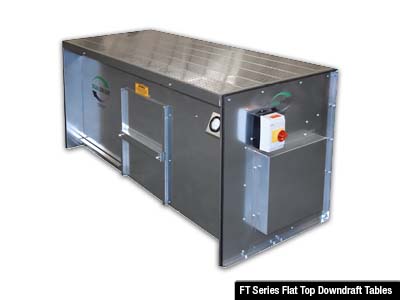It's Time to Clean the Air
How OSHA and EPA rules impact your facility decisions
In 2006, the United States Occupational Safety and Health Administration (OSHA) made a significant change in the Permissible Exposure Limit (PEL) in the U.S. for hexavalent chromium. OSHA had defined the level of exposure for hexavalent chromium at 52 μg/m3 (micrograms per cubic meter). The new PEL for hexavalent chromium is 5 μg/m3 averaged over an 8-hr shift, a 10.4 times reduction from the previous standard. In 2008, the Environmental Protection Agency (EPA) also issued a final ruling that established National Emission Standards for Hazardous Air Pollutants (NESHAP) for nine metal fabrication and finishing source categories. The purpose of the regulations is to reduce air emissions of Metal Fabrication Hazardous Air Pollutants (MFHAP): metal compounds including cadmium, chromium, lead, manganese and nickel.
Using a shielding gas such as Linde’s Stargon™ SS gas blend, designed specifically for the welding of stainless steel, optimizes the welding process and reduces fume generation. In addition, a StarSolver® Productivity Enhancement Program audit can be requested and can help optimize production processes, improve productivity and identify areas of concern or noncompliance in your effort to control fumes.

Linde’s StarSolver program can help you make cost-effective changes that yield exceptional results:
- Improvements in weld appeal, production speed, and product and weld quality
- Reductions in fume generation, lost production time and inefficiencies
There are 3 proven process related ways to reduce fumes when welding:
- Reduction in amperage – As melting rate decreases, fume generation decreases.
- Reduction in voltage – As the power decreases, fume generation decreases.
- Change in shielding gas – As the percentage of CO2 in a gas blend decreases, fume generation decreases.
Lowering your generated fumes first may help reduce the cost of ventilation. Linde offers a full line of products and equipment to help manage and reduce fume levels and lower worker exposure levels, including:
- Turnkey Engineered Source Capture Filtration Systems
- Turnkey Engineered Ambient Filtration Systems
- Portable Ventilation Equipment
- Downdraft and Backdraft Tables
- Walk-in Ventilation Booths
Turnkey Engineered Systems for:
- Robotic Weld Cells
- Plasma Cutting Tables
- Laser Cutting Tables




























